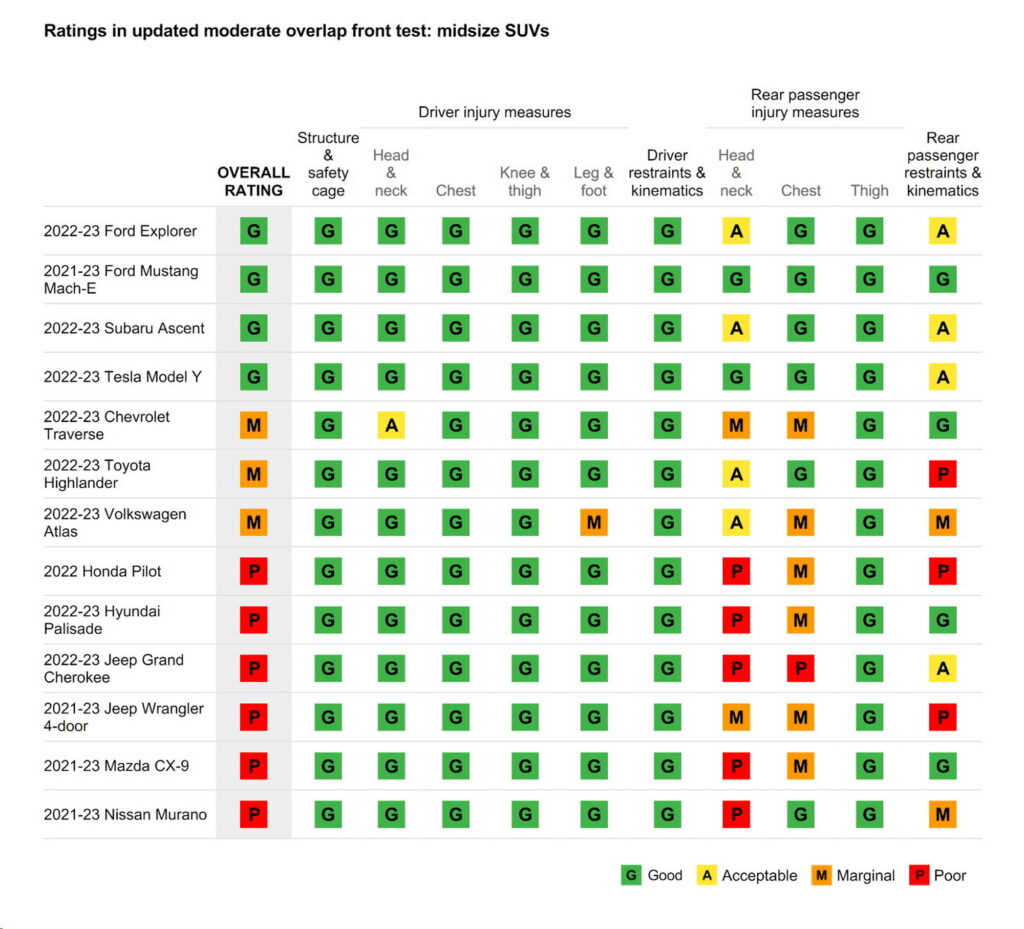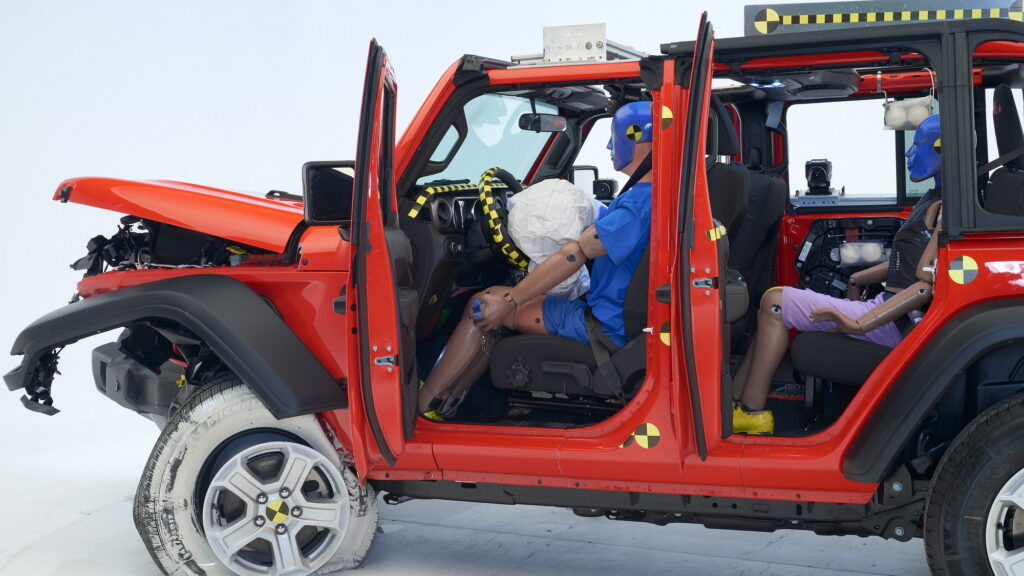In an effort to push automakers to bring as many safety innovations to the rear seats of vehicles as have been developed for the front seats, the Insurance Institute for Highway Safety (IIHS) has introduced a new crash test.
The new test focuses on the safety of rear seat occupants in frontal collisions, and features a dummy that simulates a 12-year-old child or a small woman. Unfortunately, the test has found that safety in back seats is lacking, as nine of the 13 midsize SUVs it tested most recently earned its two lowest scores as a result of their lagging rear seat safety.
“All these vehicles provide excellent protection for the driver,” said David Harkey, the IIHS‘s president, “but only a handful extend that level of safety to the back seat.”
Of the vehicles tested, just four were able to hold onto their “Good” (the highest possible) overall rating in the overlap front crash test when consideration for rear seat passengers was taken into account. They were the 2022-23 Ford Explorer, the 2022-23 Subaru Ascent, the 2022-23 Tesla Model Y, and only the 2021-23 Ford Mustang Mach-E aced the test, earning “Good” ratings across the board.
Read: Over 70 Vehicles Lose IIHS Top Safety Awards Under 2023 Criteria
The IIHS found that the seatbelts remained properly positioned, the side curtain airbags performed as intended, and there was no pressure on the chest of the dummy in the above vehicles. It notes, though, that there was a slight risk of head and neck injuries in the Ascent and the Explorer, while the dummy’s head got too close to the front seat in the Model Y.
The risk of injuries for “Marginal” rated vehicles was higher, but few vehicles struggled more than the 2021-23 Jeep Wrangler four-door and the Jeep Grand Cherokee. The former earned “Marginal” ratings in both head and neck and chest safety, and it got a “Poor” rating in the “Rear passenger restraints and kinematics” test.
The IIHS noted that the Wrangler does not have a side curtain airbag in the back, and that the lap belt moved out of the ideal position on the pelvis onto the abdomen during testing, increasing the risk of injuries. In the Grand Cherokee, meanwhile, the dummy’s head ended up between the airbag and the window, increasing the risk of a head injury.
As a result, it got poor ratings in the head and neck and chest categories, and only an “Acceptable” rating in the “Rear passenger restraints and kinematics” test. The Jeeps were far from the only models to get a “Poor” rating after the rear passenger testing was introduced, though.
The 2022 Honda Pilot, 2022-23 Hyundai Palisade, 2021-23 Mazda CX-9, and the 2021-23 Nissan Murano all struggled to keep their back seat passenger safe in an accident, despite earning “Good” ratings for the driver.
“Zeroing in on weaknesses in rear seat safety is an opportunity to make big gains in a short time, since solutions that are already proven to work in the front can successfully be adapted for the rear,” said Marcy Edwards, the senior research engineer who led the development of the new test. “The four good ratings in this round of testing show that some automakers are already doing it.”





